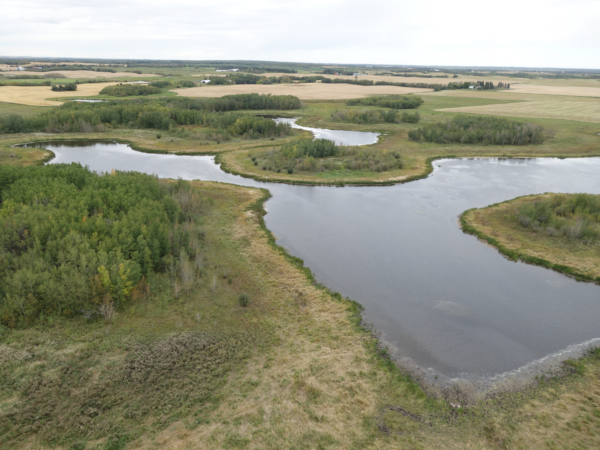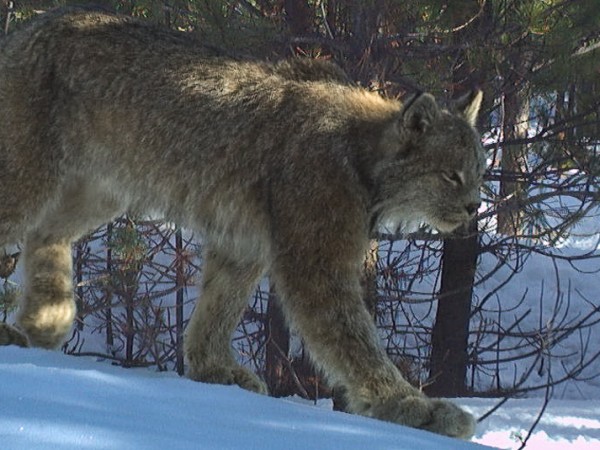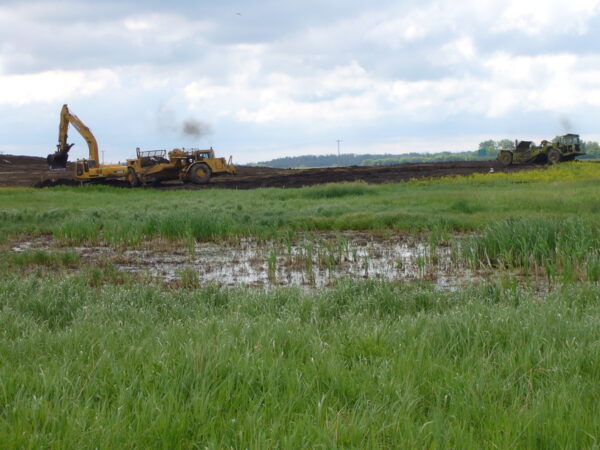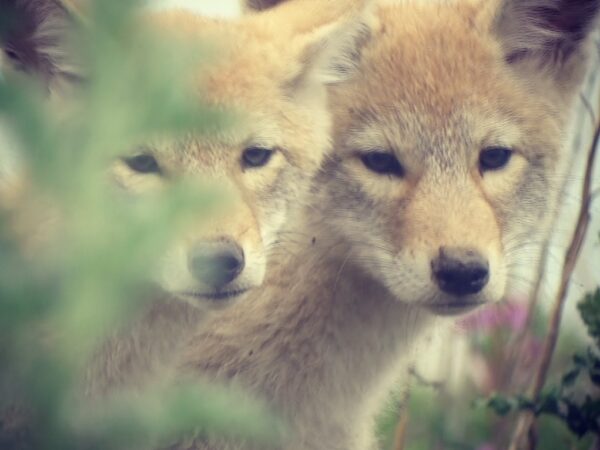Grizzly bears (Ursus arctos) and black bears (Ursus americanus) are two species of bears found commonly around the north and west areas of Canada. They can sometimes be hard to tell apart, but understanding the differences between black bears and grizzlies can be both interesting and important for safety. (If you’ve ever seen the giant claws on a grizzly you’d probably agree!)
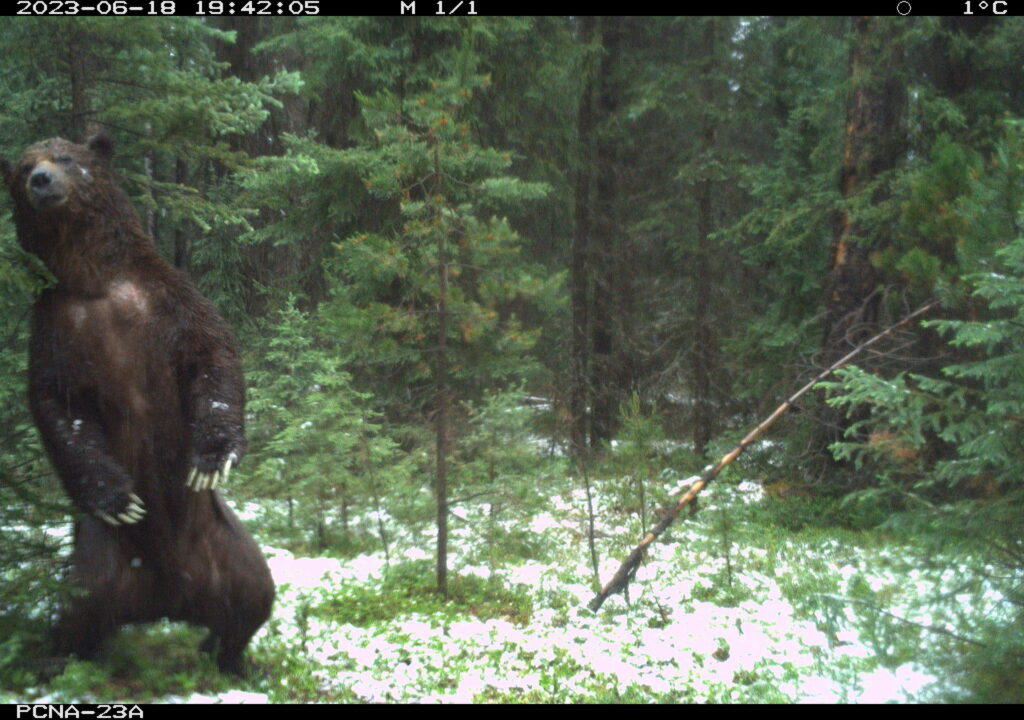
Bears are often initially differentiated by onlookers on the basis of their colour. However, this can be a deceiving method of telling them apart due to different colour phases bears can have. Contrary to what their name suggests, black bears can be a multitude of different colour phases including blue, red, and cinnamon. Grizzly bears can also appear in different shades. Although colour may seem like the most obvious way to distinguish bear species, there are more accurate methods to figure out whether a bear is a grizzly bear or a black bear.
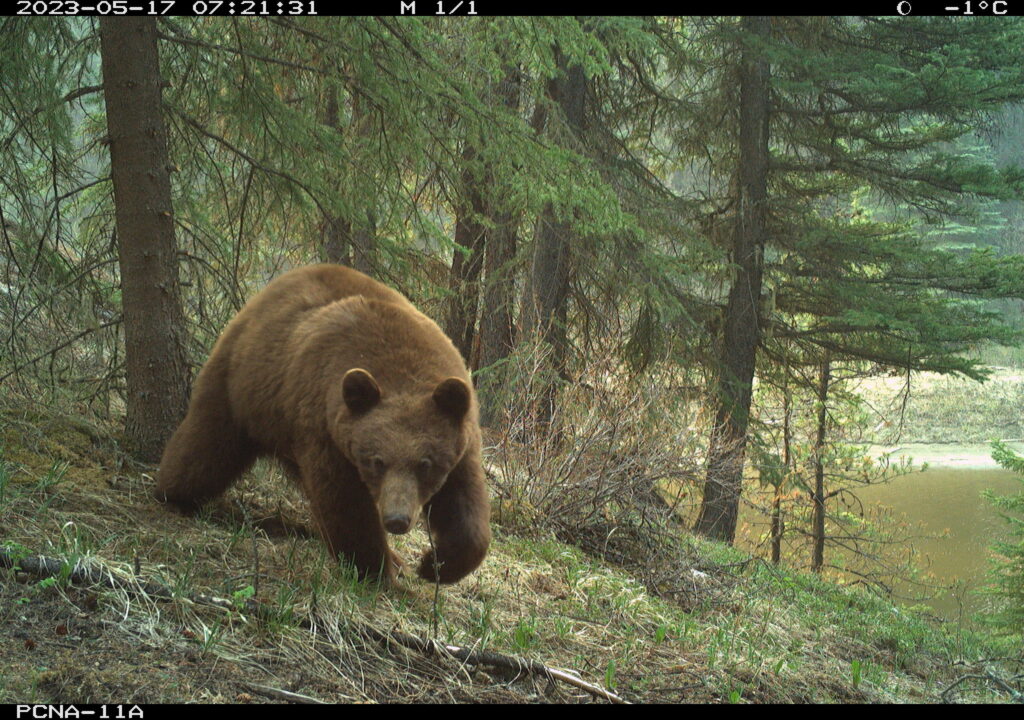
One of the main differences between a grizzly bear and a black bear is the presence or absence of a shoulder hump. Grizzly bears have protruding muscle mass on their shoulders which provides them with strength and gives them their large “humped” appearance. On the other hand, black bears have smaller shoulders with no apparent hump, causing nothing more than a slight shoulder curve. A prominent shoulder hump can be a dead giveaway for a grizzly, especially if it is being viewed from the side. Another characteristic which separates grizzlies and black bears are their differing front foot claw length. Black bear claws only reach up to a maximum of 2.5 inches, whereas grizzly bear claws can span to 4 inches in length (Burt & Gossenheider 1980). The claws on both species also differ in purpose. While both species use their claws to fight and defend, grizzlies have straighter, blunter claws to aid them in digging. Black bear claws are more specialized for tree climbing, so they are curved and sharper than grizzly claws.
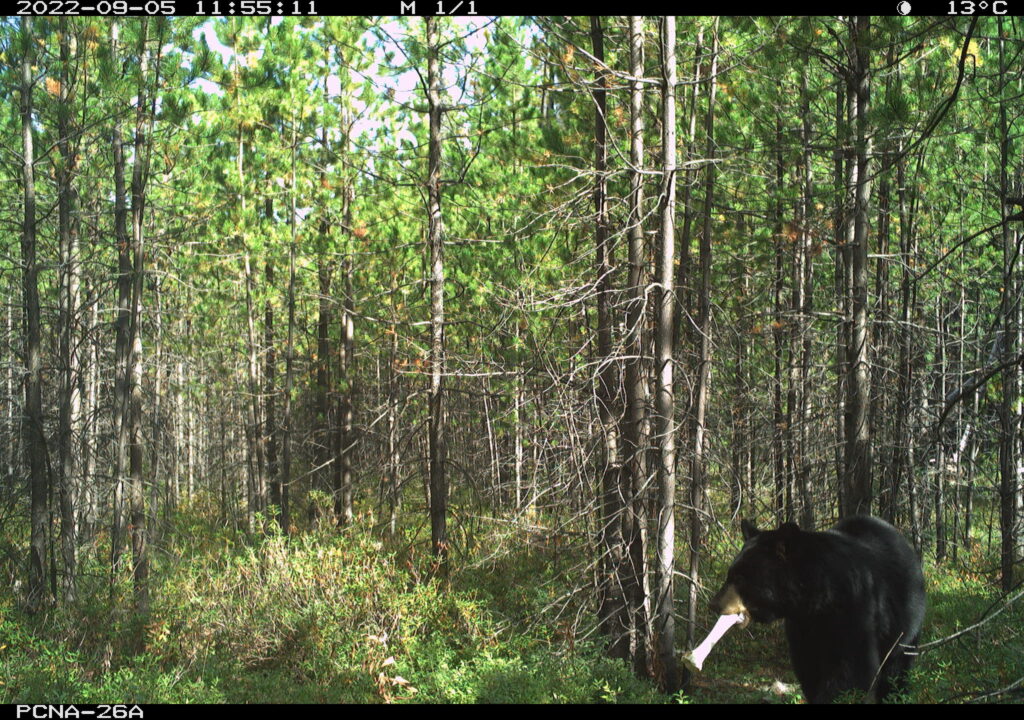
Snout curvature and shape is another indicator between black bear and grizzly. Black bears have a profile which is straighter from the top of the head to the tip of the snout, giving a sloped appearance. Grizzly bears have a “dished” snout which has a concave curve from the base of the snout to the tip, giving the grizzly a more distinct break where the snout meets the rest of the face. The ears on a grizzly are also different than the ears on a black bear, with grizzly ears being shorter and rounder and black bear ears being longer and larger relative to the rest of their face.
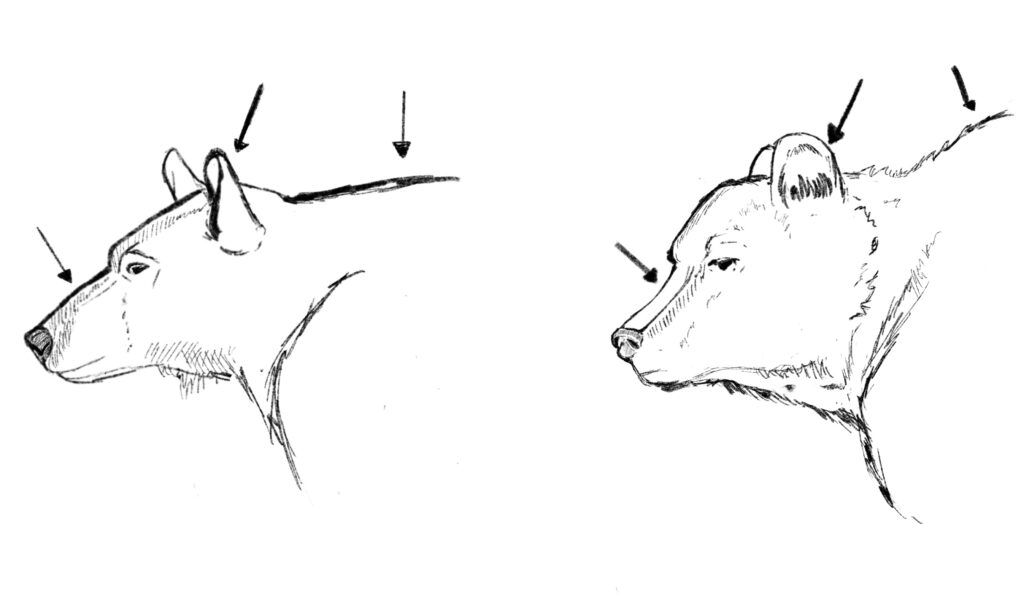
Being able to differentiate bear species is just one step in learning to navigate bear country and coexist with large predators. Although bears can be dangerous to humans, there are many tactics and precautions which can be practiced to decrease the possibility of a negative encounter. A book which has personally informed me about bear encounters is Stephen Herrero’s “Bear Attacks: Their Causes and Avoidance” (1985). While most people engaging in recreation or work in bear country will never have an aggressive encounter with a bear, the book provides case studies of encounters and explains the behavior behind them, providing a realistic and objective perspective without the fear-mongering often presented in the media when a reported bear attack happens. The book also explains bear behavior in greater detail than general audiences receive from brochures in bear country parks. Herrero advocates for a more nuanced understanding of bears for those living and working in bear country, as it is imperative for those around bears the most to be knowledgeable about them. Appreciating and respecting bears can lead to a positive relationship between bears and humans, and can promote the conservation and wellbeing of bears.
Grinning Grizzly was researched and illustrated by Bria Griffin

References
Burt, W. H., R. P. Grossenheider, 1980. A Field Guide to the Mammals: North America north of Mexico, third edition. Houghton Mifflin Company, New York, USA.
Herrero, Stephen. 1985. Bear Attacks: Their Causes and Avoidance. Lyons & Buford, New York, USA.

